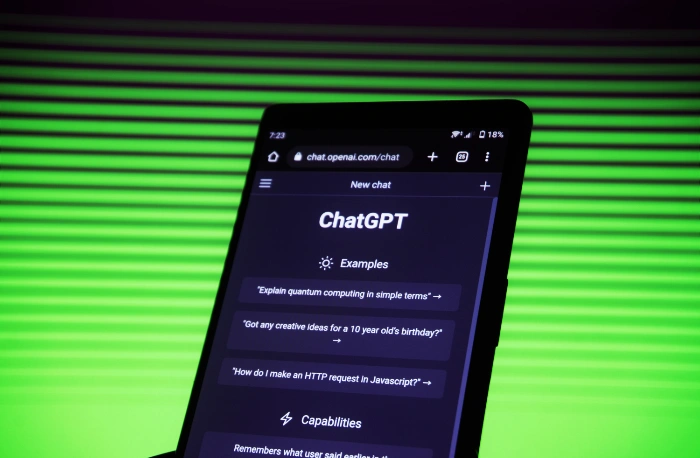This guide is designed to explain how to use ChatGPT for beginners, we will cover everything you need to know about how ChatGPT works and how to use it. ChatGPT, a remarkable creation by OpenAI, stands at the forefront of conversational artificial intelligence technology. This sophisticated model is not just built to answer questions but can also seamlessly generate text, conjure up stories, and even pen down poetic expressions. For newcomers to this platform or for veterans eager to sharpen their expertise, this guide aims to unravel the complexities and nuances, helping users leverage ChatGPT to its maximum capacity.
Setting Up and Accessing the Model
Prior to delving deep into the rich and dynamic dialogues with ChatGPT, it’s beneficial to be aware of the multiple avenues available to interact and establish communication with this cutting-edge AI:
Public Interface: OpenAI has generally provided a straightforward and intuitive online platform for users. This acts as a direct gateway, allowing technology enthusiasts, researchers, and the general public to engage in fluid conversations with ChatGPT with ease and convenience.
API Integration: On the other hand, for those who are more technologically inclined, as well as businesses that are looking towards greater scalability and integration capabilities, there exists an attractive option. They can seamlessly incorporate ChatGPT into their own unique applications or service offerings by leveraging the robust capabilities of the OpenAI API
Navigating Basic Usage
Prompting Techniques: Start your interaction by introducing a specific question, highlighting a subject that piques your interest, or presenting any related textual information. Rely on ChatGPT to reply; its responses are crafted drawing from the vast depth and breadth of its intensive training data, ensuring informative and reliable feedback.
Sustaining Conversational Flow: More than just addressing singular inquiries, ChatGPT shines in its capacity to sustain extensive dialogues over time. It is designed to offer interactions that closely emulate the fluidity and depth of human conversations, thus providing users with an experience that feels almost akin to speaking with another person
Mastering Advanced Techniques
Open-ended versus Specific Questions: The distinction between asking open-ended questions and those that are more specific can greatly influence the depth and breadth of the responses received. An open-ended inquiry might lead to a broad overview, encapsulating various facets of the subject. However, if you’re seeking more pinpointed insights, it’s pivotal to articulate specific queries. For illustration, while asking “Can you provide a narrative on WW2?” might yield a panoramic view of events, a question like “Who were the main combatants in WW2?” will garner a more focused rundown of the primary participants.
Temperature Control: Especially for developers and tech enthusiasts who engage with ChatGPT via the API, the temperature setting offers a nuanced way to adjust the AI’s response style. This adjustable tool directly influences the degree of unpredictability in the AI’s answers. As the setting nears 1.0, the output becomes more diverse and unexpected. Conversely, dialing it down closer to 0.0 will produce responses that are more consistent, measured, and deterministic.
Max Tokens Constraint: A valuable addition for those seeking clarity without the verbosity, this feature acts as a limiter to the length of the model’s replies. It ensures that users receive answers that are both succinct and directly related to their queries, thereby eliminating unnecessary elaboration and enhancing user experience.
Exploring Potential Use Cases
Content Creation: Whether you’re aiming for a finely detailed journalistic piece, an evocative narrative, or rhythmic and emotive poems, the capabilities of this tool are expansive. The scope for creativity is vast; it’s almost as if the horizon stretches endlessly, offering infinite possibilities for artistic expression.
Academic Assistance: With its vast knowledge repository, ChatGPT stands as a formidable virtual mentor, adept at clarifying and elucidating a diverse array of academic subjects. Whether it’s history, science, mathematics, or the humanities, you’ll find this AI platform to be an invaluable companion in your educational journey.
Tech and Coding Assistance: Should you find yourself grappling with a complex technical issue or facing a programming hurdle, do not hesitate to bring forth your questions. The AI is equipped to offer insights, suggest solutions, and guide you through the intricacies of the technological realm.
Entertainment: Venturing beyond the realms of information and assistance, the platform also excels as a source of leisure and amusement. Engage in captivating storytelling simulations, witness the AI assume various character roles, or simply let loose and share a laugh. The versatility ensures that there’s something for everyone, irrespective of your mood or preference.
Recognizing Ethical Considerations and Model Limitations
Bias Concerns: Like any sophisticated model that has been shaped and refined by extensive data sets, ChatGPT is not immune to biases. There are instances when the AI might inadvertently mirror the biases that existed in the sources it was trained on. This reflection is a testament to the vastness of its training but also serves as a reminder of the imperfections in any data-driven model.
Reliability Considerations: While ChatGPT is undeniably powerful and informative, users are encouraged to exercise discernment, especially when it comes to critical decisions. Relying on this AI for tasks that demand absolute precision and accuracy can be risky. Specifically, in areas like medical advisement or legal recommendations, it’s always best to seek expert human guidance, given the potential consequences of misinterpretation.
Data Privacy Precautions: OpenAI has steadfastly voiced its commitment to data privacy, emphasizing its policy of not retaining personal user data. This approach is indeed laudable. However, users should remain vigilant. It’s always wise to err on the side of caution, refraining from sharing any sensitive or personal information during interactions, regardless of the platform’s policies.
Hacks for Optimal Outcomes
Refinement through Rephrasing Techniques: At times, an initial interaction with ChatGPT might not precisely hit the desired informational target. In such scenarios, tweaking the phrasing or altering the structure of your question can dramatically improve the accuracy and relevance of the AI’s response. This subtle rearticulation can often unlock more insightful feedback.
Harnessing the Model’s Inherent Ambiguity: It’s interesting to note that if ChatGPT showcases any degree of uncertainty or ambiguity in its response, this can be indicative of a couple of scenarios. It could suggest that the subject matter lies on the fringes of its training data, or it might point to areas where definitive information is limited or contentious. Recognizing this can help users navigate the conversation more effectively.
Laying Down a Solid Contextual Foundation: Especially when diving into complex or multifaceted subjects, it’s beneficial to establish a clear context from the outset. By providing a comprehensive backdrop or specifying the framework of the discussion, users can guide the AI in a direction that yields more coherent, nuanced, and contextually appropriate responses.
Debugging and Overcoming Hurdles
Interpreting Unexpected Responses: From time to time, users might encounter answers from ChatGPT that seem to deviate from expectations. This can be attributed to the inherent randomness built into the model or the way the original query was structured. Understanding this unpredictable aspect can provide clarity on why certain responses emerge as they do.
Tackling Issues of Repetitiveness: In some interactions, the AI might display a tendency to revert to repetitive or cyclic patterns in its answers. This can be a function of various factors, including the AI’s attempt to remain consistent or due to the nature of the prompt. Adjusting settings like the temperature or rephrasing the initial question can often provide an effective countermeasure, steering the conversation back to a more varied and dynamic path.
Finding Solutions to API-related Challenges: Developers interfacing with ChatGPT via the API might occasionally face technical snags, be it constraints related to rate limits, challenges with token counts, or other API-specific issues. In these moments, OpenAI’s comprehensive official documentation stands as a valuable resource, shedding light on best practices and solutions, and guiding developers through any hurdles they might encounter.
ChatGPT is designed to generate human-like text based on the prompts it receives, making it capable of engaging in detailed conversations, answering questions, and producing written content. Its vast training data allows it to cover a wide range of topics, but, like all models, it can occasionally reflect biases from its training sources. Users and developers can interact with ChatGPT through OpenAI’s interface or its API, tailoring its behavior using settings like temperature and token limits. We hope that you find out guide on how to use ChatGPT for beginners useful, if you have any comments, questions or suggestions, please leave a comment below and let us know.
Image Credit: Mojahid Mottakin
Filed Under: Guides, Technology News
Latest Aboutworldnews Deals
Disclosure: Some of our articles include affiliate links. If you buy something through one of these links, Aboutworldnews may earn an affiliate commission. Learn about our Disclosure Policy.







